Disclosure: Please note that some links are affiliate links, and at no additional cost to you, we earn a commission if you make a purchase.
If you would like to support this website in some way, using these links will help do exactly that.
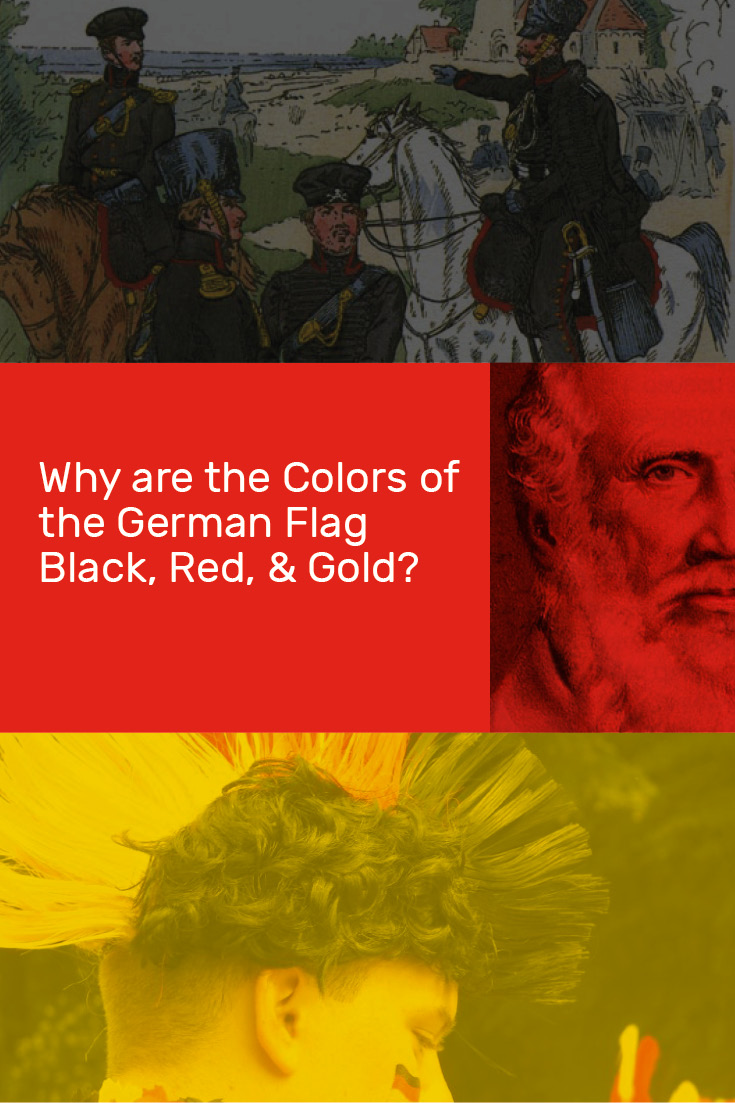
It is not clearly documented how the three colors black, red and gold became a part of the German flag. However, we will take you back through the early undocumented history until today.
German Flag Color Symbolism Theories
• There are different interpretations regarding the meaning of the German flag colors, black, red, and gold.
• One interpretation argues it was inspired by a song with a text of, "Powder is black, blood is red, golden flickers the flame.”
• Another interpretation suggests "black and gold" was the color of the old empire, and red symbolized the blood spilled in the fights for freedom.
• Similarly, another interpretation goes on to say the order of the colors symbolizes German history, "Through night (black) and blood (red) to the golden light of freedom.”
• Others see the red color as a symbol of the Hohenstaufen dynasty, which, in the early German history, crowned emperors and kings.
According to the rules of heraldry (the design of coat of arms), the German flag would not exist in its familiar form. In order to ensure the identifiability of a coat of arms at greater distances, heraldry distinguished colors and metals, with yellow representing gold. This means that colors in a coat of arms cannot touch as they have to be separated by metal. In this respect, the German flag color order would have to be black-gold-red.
German Flag Speculated Beginnings
The earliest legend of the flag dates back to the time of the Napoleonic Wars, specifically 1813-1814, and a group of volunteer resistance fighters, known as Lützow Free Corps, who took any civilian clothing they could find and dyed them uniformly black. With gold buttons, red cuffs, and black uniforms, on volunteer fighters from all over Germany and Austria, it is thought this is where the inspiration of the flag colors came from.
Another theory is that Friedrich Ludwig Jahn, a German gymnastics educator, designed a black, red, and gold flag in 1812. Jahn, an outspoken nationalist, had also participated in the liberation war against Napoleon, and the black, red and gold colored flag he designed was allegedly carried in battle.
Documented History of the German Flag
Napoleon still ruled during the early 19th century, but the German Campaign battle in 1813 liberated the German states from the domination of the French and led to a reorganization of Germany in 1814. The German Confederation was founded with 37 individual states and four free cities under the presidency with Austria. This new form of government, where the new nation was controlled by a different country, had many critics longing for a unified, self-governed Germany.
Among these critics was the fraternity of the German city Jena, which had their fraternity flag colored black, red and gold. This flag became a symbol of protest against the paternalism of Austria. Among other things, the German citizens demanded the freedom of the press and freedom of opinion. To restore order, the Austrian government finally gave in and an all-German parliament was established in Frankfurt at the so-called Frankfurt Parliament in the Paulskirche. Black, red and gold was declared the official flag of Germany.
During the Nazi regime, which started in 1933, the National Socialists first supplemented the German flag with their swastika and later used a flag with the swastika on a red background.
After the end of the Nazi dictatorship and WWII, it was obvious to return to the flag which had become a symbol of freedom for Germany, even though Germany was divided into East and West. To distinguish itself from West Germany, the East German government added a coat of arms to their flag in 1959. The coat of arms showed a hammer for the working class, the circle for the thinkers, and a garland of corn for the peasants. With the end of the GDR in 1989 this variation disappeared. Since then, the simple "black-red-gold" scheme applies to the entire country.
The German Flag Today
Even today, the German flag or it's national colors are infrequently seen in Germany compared to many other European countries. Remembering the use of a flag as a propaganda tool during the Nazi regime is still present in the heads of the German people. In recent years, however, there has been a cautious resurfacing national pride, which makes it normal for Germans to claim their country and to show the national colors, especially at international sporting events, like the 2006 World Cup, which was hosted by Germany, or after winning the 2012 World Cup.
Follow Along
If you enjoyed this article, or these topics sound interesting to you, you'll love our weekly newsletter. You'll receive a free Germany Packing list for signing up, and you'll receive each week's newest posts every Friday. Thank you for reading!

Photo Credits: 1890 illustration of Prussian Lützow's Free Corps by Richard Knötel (1857-1914). | 1852 lithograph of Friedrich Ludwig Jan | 2006 World Cup in Berlin, photo by Alexander Husing, flickr user azrael74 with Attribution 2.0 Generic .
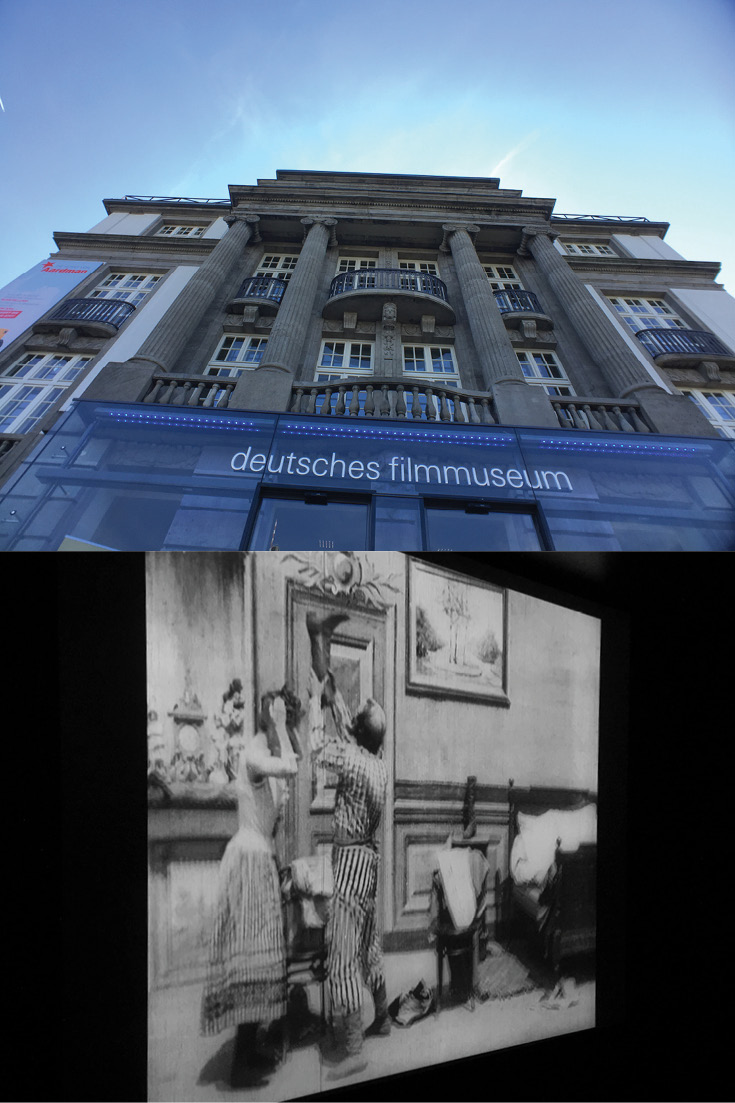
If you love movies, I have a museum for you. I had initially put off seeing the Deutsches Filmmuseum because I had the preconceived notion that I should be a film buff to appreciate it, but I was so wrong. This museum is actually a behind the scenes look at how movies are made, and explains the technological advances that culminated in the invention of film, from wooden peep show boxes to photograhy.
The museum is very modern, has interactive stations throughout to help explain the concepts, and there’s English translations on almost all of the signage. Don’t have all day? Even better, because you can easily make it through the entire permanent collection in a morning.
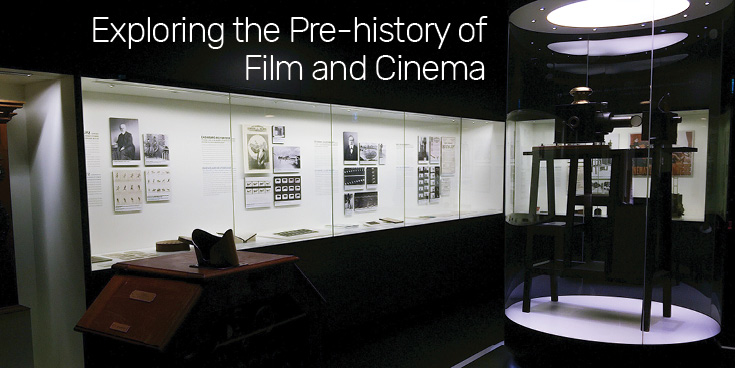
Filmic Vision | 1st Floor
The first floor was historically-focused on the 16th-19th centuries, and explained various inventions and precursory technology that made the invention of film possible. The Deutsches Filmmuseum really excels at explaining how the antiquated apparatuses worked, and contextualized why it inspired further curiosity and invention. You're able to experience firsthand many of the historic gadgets on display. For example the museum sets up the (pictured below) peep show exhibit so you can understand how it works by viewing the layout of the interior of the box, as well as look through the viewing hole as intended.
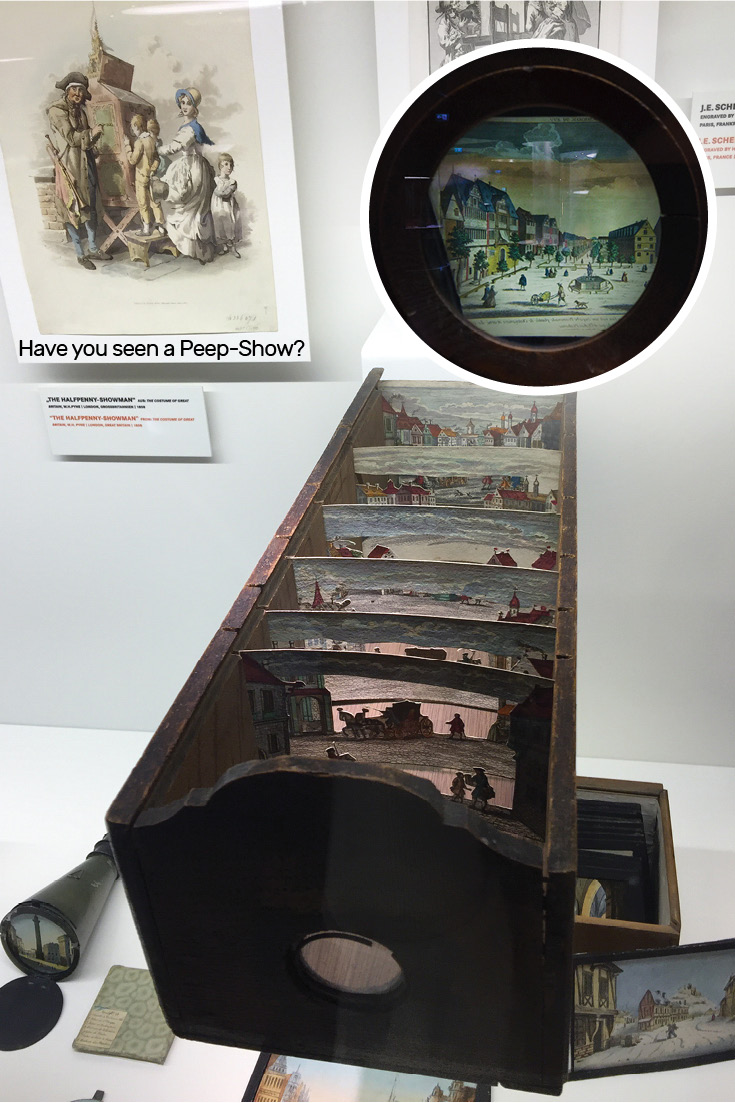
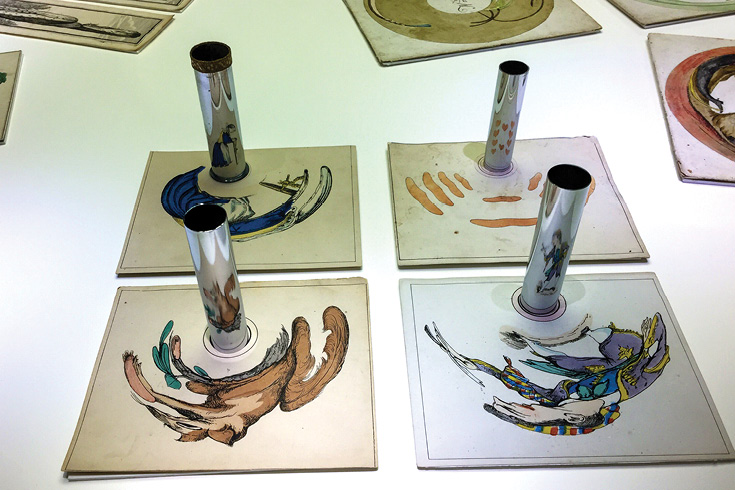
The floor ends triumphantly with introducing projection technology in a complete theater room showing black and white silent film.
Filmic Narrative | 2nd Floor
Up the stairs, the exhibits move into present day breaking down the elements of a movie; acting, sound, images, and editing.
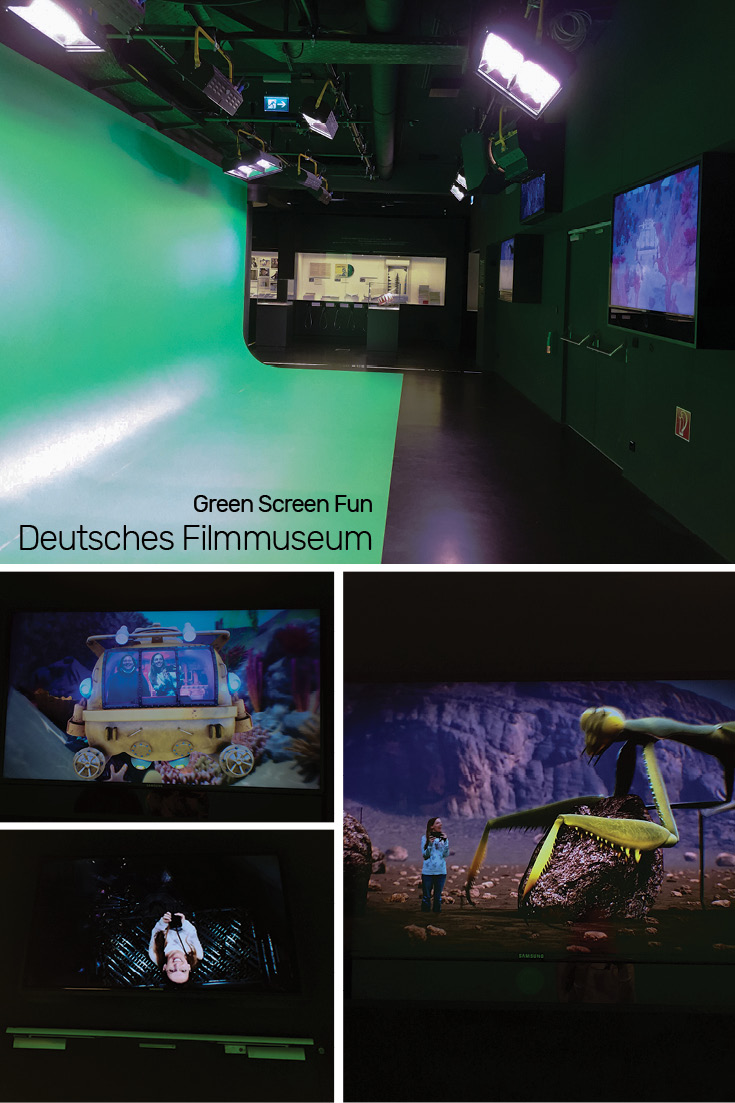
The interactive station fun continues with a gigantic green screen that you can experience, and a mood lighting lab where you can recreate historic lighting setups from classic scenes using yourself as the subject.
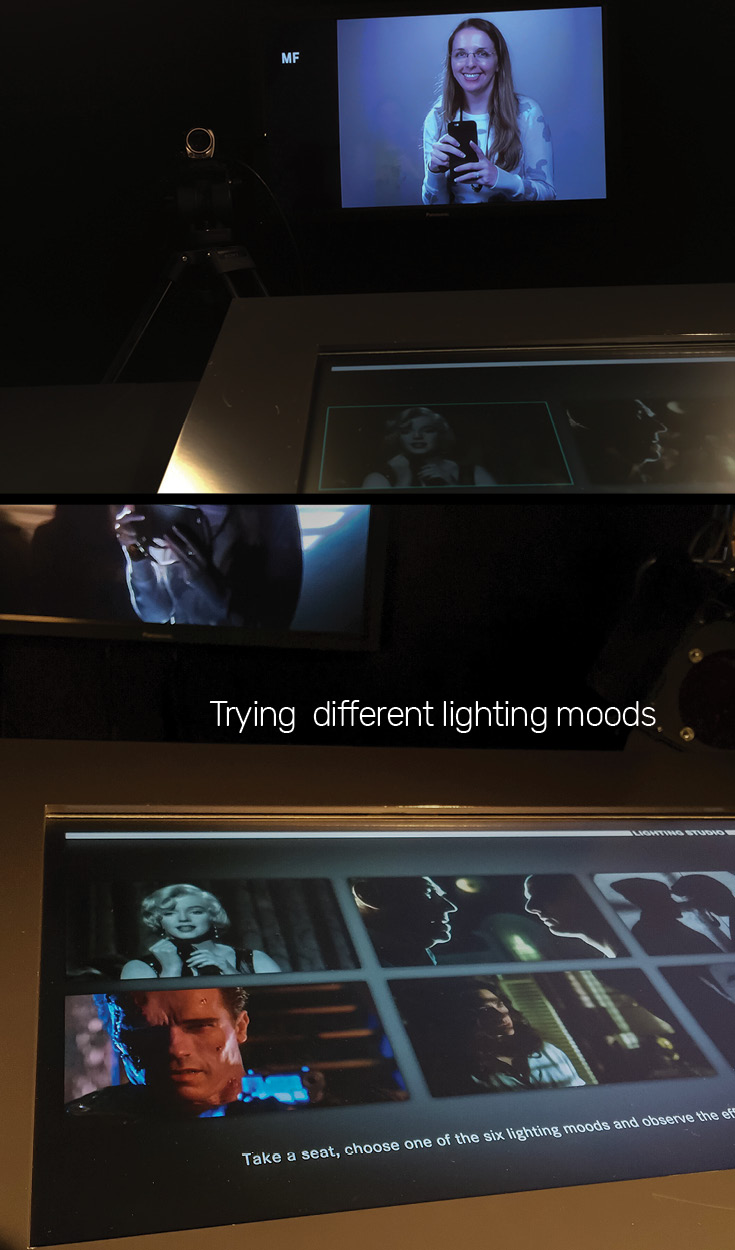
Sprinkled throughout this floor are movie props, scripts, and storyboards from iconic movies that will give you goosebumps. The collection even has a Darth Vader helmet used in the original Star Wars trilogy!
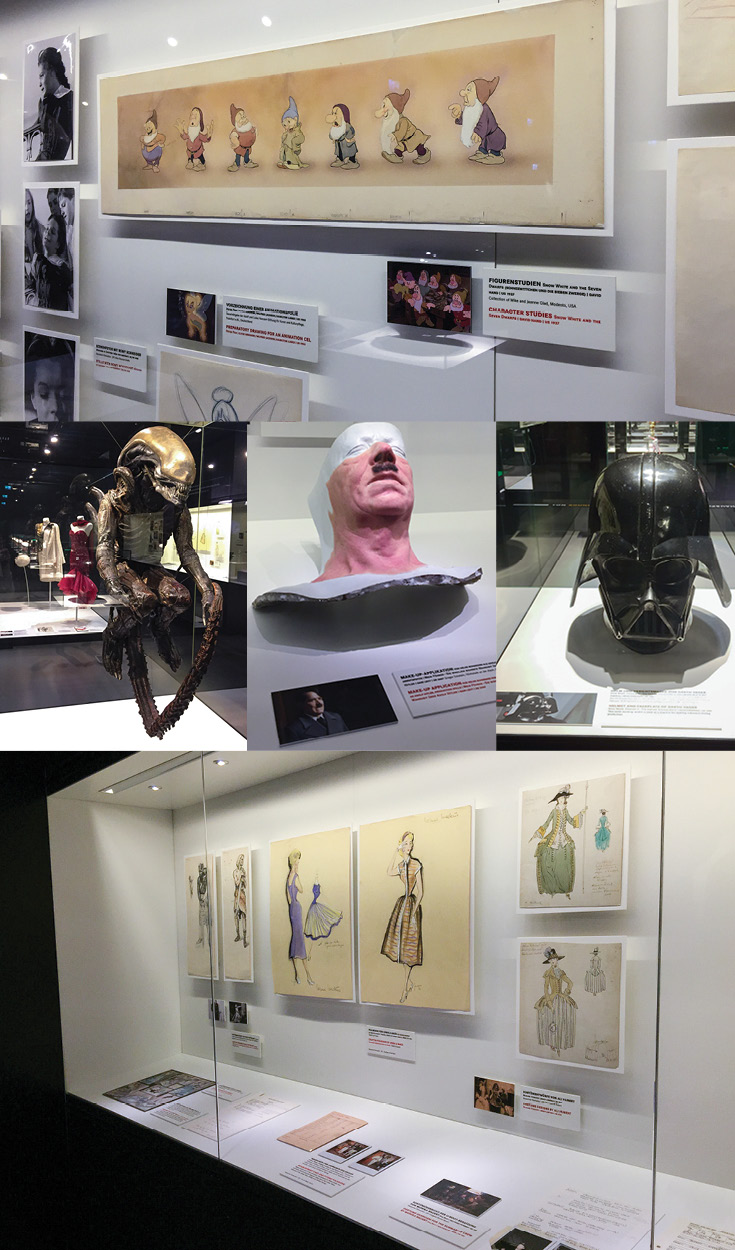
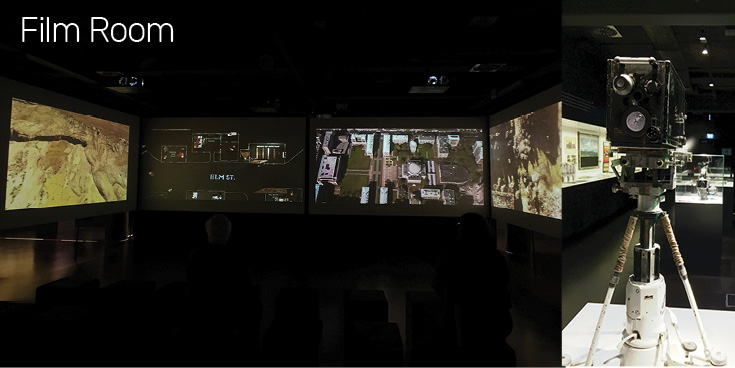
In the editing exhibit I was amazed to see a half painting, where the top was a hilly landscape painting, and the bottom half was just black...because that’s where they edited in real film footage of a boat on the water!
For a finale, four projection screens were assembled forming a U-shape with four different movies playing at the same time that all had similar visual elements together, like all chasing scenes, all walking scenes, all green monsters, but only one movie soundtrack playing.
Be sure to check out the current temporary exhibit. When I visited they had a Shaun the Sheep exhibit that included the real claymation sculptures and sets.
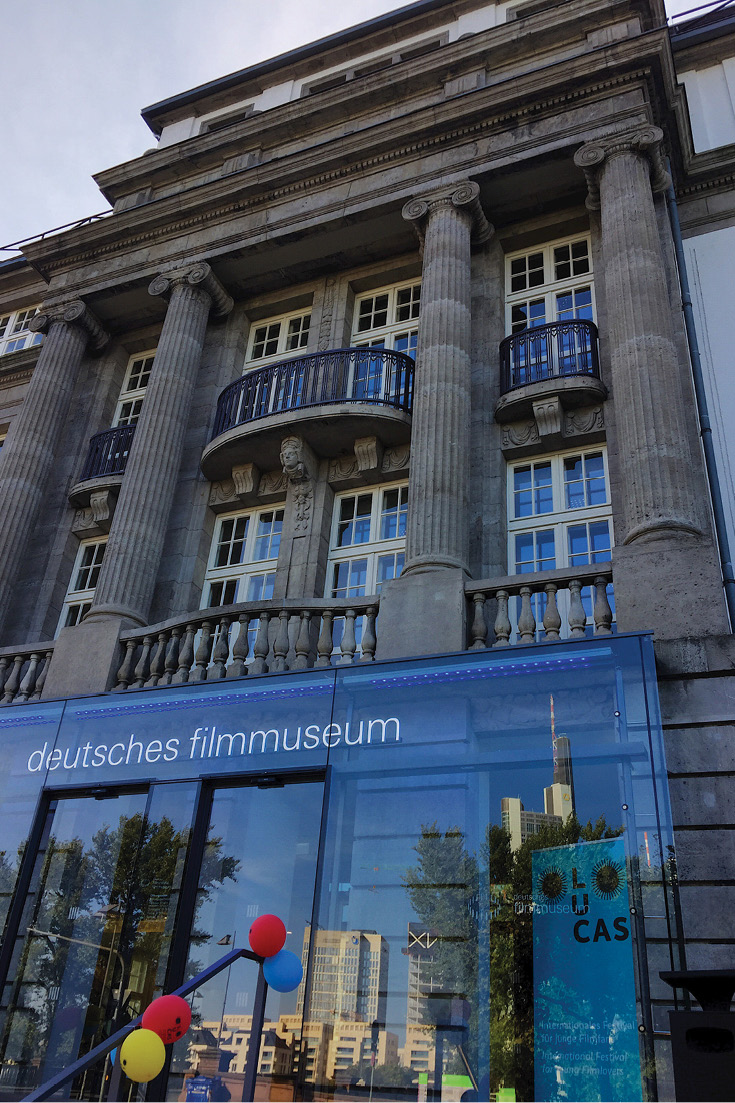
Planning your Trip to the Deutsches Filmmuseum
The museum is open Tuesday through Sunday from 10:00 a.m. until 6:00 p.m. Wednesday the museum stays open for 2 additional hours, closing at 8:00 p.m. Tickets start at 6 Euros with some discounts available. Click here for more information.
Follow Along
If you enjoyed this article, or these topics sound interesting to you, you'll love our weekly newsletter. You'll receive a free Germany Packing list for signing up, and you'll receive each week's newest posts every Friday. Thank you for reading!

On March 3rd, 2017 there was a story in the news reported by TIME Money and also in Reuters World News regarding a change in visa law for US Citizens entering Europe. Could this impact your summer travel plans for Europe? We take a look at the stories as this change would affect us, as well as many of our readers.
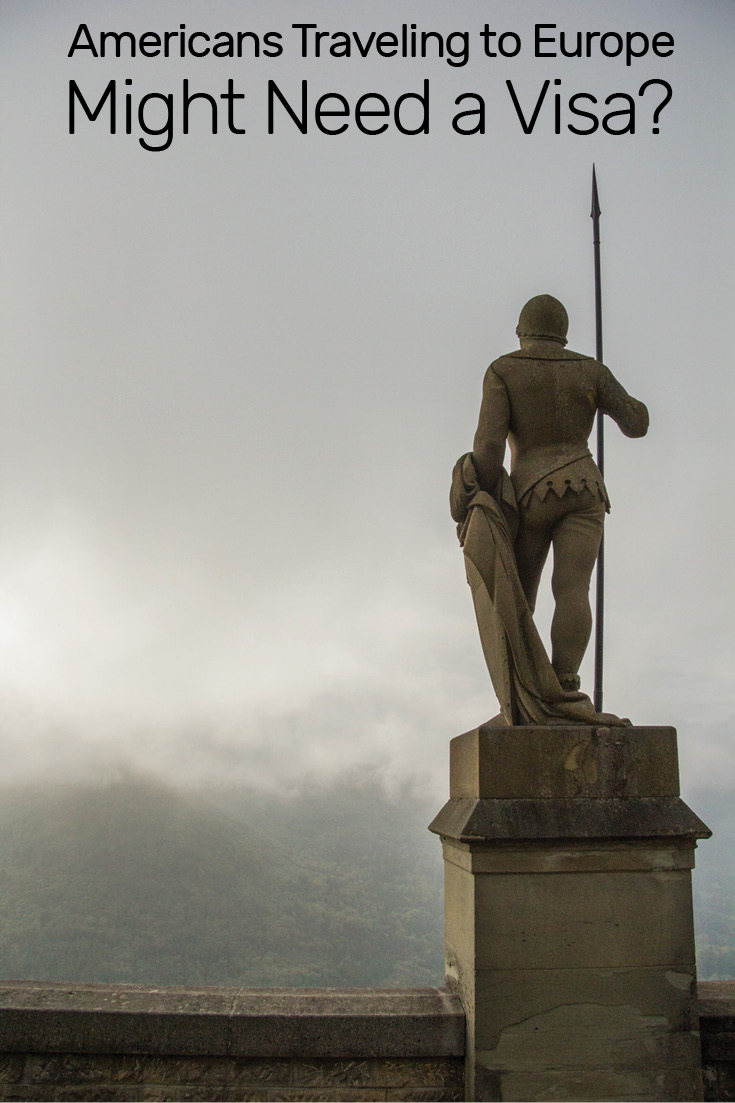
The United States currently requires a visa from citizens of five European Union countries: Bulgaria, Croatia, Poland, Romania and Cyprus. Citizens from all other European Union countries can enter the US without a visa, but still have to fill out the ESTA form of the US Customs and Border Protection.
In a non-binding motion on March 3rd, the European Parliament in Luxembourg gave the European Commission two months to review and take legal measures regarding visas for Americans traveling to Europe, unless the United States offered reciprocity to ALL European Union citizens. The United States and the European Union have a reciprocal visa agreement, which also describes that this agreement can be temporarily suspended, if a “third state” does not grant it to ALL European Union countries. If no solution is found within two months, Americans might have to file for a entry visa starting May 2017 to enter Europe.
Now, before you panic and reach out to your embassy: This was a non-binding motion, meaning it is a suggestion made by the European Parliament to the European Commission. For this visa requirement to take effect, all countries of the European Union would have to approve the move, which could take years.
Currently, American citizens can travel to Europe without a visa as long as their stay does not exceed 90 days. With over 12 million Americans traveling to Europe in 2016, such a regulation would hurt the tourism industry. Also, far fewer American tourists travel to destinations with visa restrictions like Croatia and Cyprus than, for instance, Italy and Germany, which makes the EU Commission less likely to budge on this subject.
We will keep you posted if there is any significant change to this story. If you want to get the latest information about where your US passport can take you, check the U.S. Department of State website by clicking here.
Follow Along
If you enjoyed this article, or these topics sound interesting to you, you'll love our weekly newsletter. You'll receive a free Germany Packing list for signing up, and you'll receive each week's newest posts every Friday. Thank you for reading!

